“All created works forged in their notebooks…”
As you’ve probably guessed, the title is is a quote from Monday’s Recommended Reading post on The Notebook: A History Of Thinking On Paper (The Notebook) by Roland Allen.
You may even recall it verbatim, only a few days having passed since the review posted. 😀
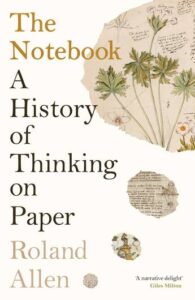
The quote refers to how a range of authors from Geoffrey Chaucer to the current era have used notebooks to jot ideas, draft text, and forge works of literature. The chapter in the book devoted to writing is titled “Yes, better if dentist is dead”, which is a quote from the “chaotic” notebooks of Agatha Christie, in which she did much of her “plotting” and brainstorming.

Another famous, and also moving, instance (not recorded in The Notebook) are the longlost works of author, Irène Némirovsky, released as the Suite Francaise in 2004.
Ms Némirovsky wrote in notebooks, and the first two instalments in a planned five part novel sequence were only discovered in the 1990s. They were among a very few personal effects that survived her, but which had not been examined since 1942, when the author was deported from Vichy France to Auschwitz. She died of typhus a month later.

Accounts of authors and notebooks always resonate because I, too, am a writer whose works are forged on paper. On Monday, I included a reference, via a photograph, to handwriting the beginnings of Thornspell (the initial three chapters, with ideas for the “more” that became the book) in a notebook.
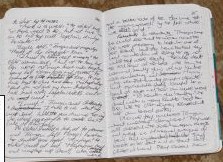
Handwritten beginnings for “Thornspell”
I also “wrangled” out my challenges and frustrations with writing the character of Tasarion, the Earl of Night (in The Wall Of Night series), in a similar notebook, while waiting for a Cook Strait ferry crossing, many years ago now.
The frustration arose because he’s not a naturally sympathetic character but I wanted him to read as a real person, not a cardboard cutout. The notebook wrangling definitely helped me resolve that dilemma and provided an understanding of the Earl that has served me well from then to now.
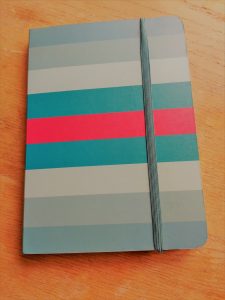
The Earl of Night notebook — yep, still have it. 🙂
And as first discussed awa’ back in 2011, I am also a “morning pager”, i.e. I write three pages longhand every morning as recommended by Julia Cameron in her now-famous The Artist’s Way.
Sometimes, nothing of writing note occurs during those three pages, but far more often ideas for character and plot development, along with actual new text itself, are captured there. I consider it telling (for their efficacy) that I wrote the endings for Thornspell, and for Myr’s narrative arc in Daughter of Blood, in the morning pages.
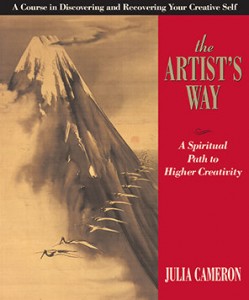
The customary vehicle for the morning pages is a 1B5 exercise book. Although maybe not technically a notebook, I reckon its close enough to count — and for me to feel part of the grand tradition of authors who think, and forge their work, on paper. 😀


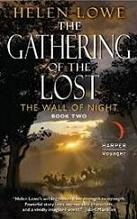
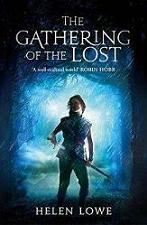
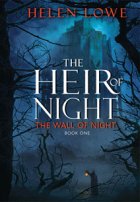
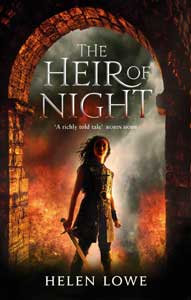


Great post. Nice to get a first hand glimpse of the writing process, and through a different lense!
Thank you, Andie: I’m glad you enjoyed.:-)